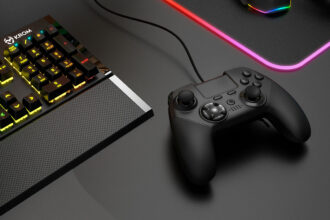Micah Chaban is the Founder and Vice President of Sales at RapidMade, a company at the forefront of advanced manufacturing solutions. With over a decade of leadership in digital manufacturing, Micah has been instrumental in shaping how industries adopt rapid tooling and additive technologies to streamline production, cut costs, and bring high-quality products to market faster. RapidMade specializes in custom 3D printed parts, rapid cast tooling, and precision CNC machining, with a strong focus on accelerating prototyping and manufacturing efficiency. In this technical interview, Micah offers expert insight into the practical and strategic advantages of modern toolmaking methods.
What’s driving the shift toward rapid pattern and tool making in today’s manufacturing landscape?
Traditional tooling methods are too slow and too rigid for the way modern manufacturing works. Companies don’t have time to wait twelve weeks for a mold or fixture—especially when product life cycles are shrinking and customization is in high demand. What we’re seeing now is a move toward lean, digital-first production where you can iterate quickly, reduce inventory, and adapt your tooling on the fly. Rapid pattern and tool making is foundational to that shift. We can now go from CAD to tool in just a few days.
What are some of the key technologies enabling this speed and flexibility?
It depends on the application, but generally we’re working with a combination of additive manufacturing, CNC machining, castable polymers, and composite materials. For instance, we use silicone and epoxy molds for short-run resin parts—those can be ready in under a week and are excellent for functional prototypes or regulated materials like food-safe or biomedical devices.
For thermoplastics, we build hybrid injection mold inserts that combine 3D printed components with machined steel or aluminum. This lets us rapidly test and adjust designs before committing to hardened tooling. In sand casting, CNC-machined foam or composite patterns offer a fast and affordable way to produce large, complex metal parts.
The real enabler, though, is the digital workflow. Once we have a validated CAD model, we can tool it using the most efficient method for the part’s geometry, material, and lifecycle.
How does RapidMade approach selecting the right tooling method for a customer?
We start with the production intent: volume, material, and function. If the customer needs 50 parts in a high-strength polymer, we’re probably going to recommend a short-run injection mold or a resin casting process. If they’re looking at a few thousand parts in metal, sand casting or investment casting with a printed pattern might be more cost-effective.
We also look at speed—how fast they need the parts—and where they are in the development cycle. A startup validating a new design might benefit from silicone molds or 3D printed wax patterns. An OEM running continuous production is going to need something robust, like machined inserts or aluminum thermoform tooling.
Ultimately, it’s about balancing time, cost, performance, and scale. Our job is to match the process to the product and guide clients through the tradeoffs.
What kind of lead times and tool lives are typical across these methods?
That varies a lot, which is why it’s important to have a full toolbox. Epoxy and silicone molds are fast—three to five days—and good for 20 to 100 parts. Thermoform molds, on the other hand, can last for 100,000+ cycles and still be ready in about a week.
Injection molds have a much broader range. We can deliver prototype molds in under three weeks with tool lives around 10,000 shots. Production-grade tooling might take longer but will last for half a million cycles or more. For sand and investment casting, patterns are typically ready in five to ten days and can serve hundreds or thousands of pours, depending on the material.
What’s changed is that none of these processes require the months-long lead times they used to. That’s the real game changer.
Are there specific industries that benefit most from rapid tooling technologies?
Definitely. Aerospace and automotive are big ones because they require frequent iteration and compliance with strict tolerances. They also benefit from hybrid tools and composite materials that balance strength and weight.
Consumer electronics and packaging are also adopting rapid tools at a fast pace. Thermoform and vacuum molds, for example, are ideal for plastic enclosures or custom trays, and we can scale those up almost overnight.
Medical and defense clients often leverage investment casting and resin-based methods for low-volume, high-performance parts. And we’re seeing a big push in sustainability from clients using molded paper pulp tools for eco-friendly packaging. That’s another area where prototyping and production can be done with the same tooling, keeping costs low and flexibility high.
How does rapid tooling contribute to lean manufacturing and Industry 4.0 practices?
It’s a perfect fit. When you can reduce tooling time from 12 weeks to 5 days, you eliminate the need for large inventories. You also unlock just-in-time production and mass customization. Instead of stockpiling parts, you can produce them when and where they’re needed.
Digitally, we’re closing the loop between design, tooling, and production. Every change is traceable, and every tool is built from live CAD data. That means faster revisions, fewer errors, and much better communication between engineering and manufacturing. It’s scalable, adaptive, and integrates cleanly with automation and MES platforms.
What advice would you give to manufacturers considering a shift to rapid tooling?
Start by rethinking the assumption that tooling has to be slow and expensive. If your lead times are slowing down your business—or if you’re holding back on iteration because of tooling costs—then it’s time to explore alternatives.
Work with a partner that understands both the technical and business sides of manufacturing. At RapidMade, we don’t just build tools—we help our clients improve their entire development process.
Whether you’re prototyping, scaling up, or launching a new product line, the right tooling strategy makes a huge difference.
What’s the best way to get started with RapidMade?
Reach out to us at RapidMade.com or send an email to info@rapidmade.com. We’ll set up a consultation to discuss your project, goals, and constraints—and recommend the most efficient tooling path forward.
We’re here to help you move fast, build better, and stay ahead. Industrial-grade tooling. Delivered fast. Engineered to perform.

















